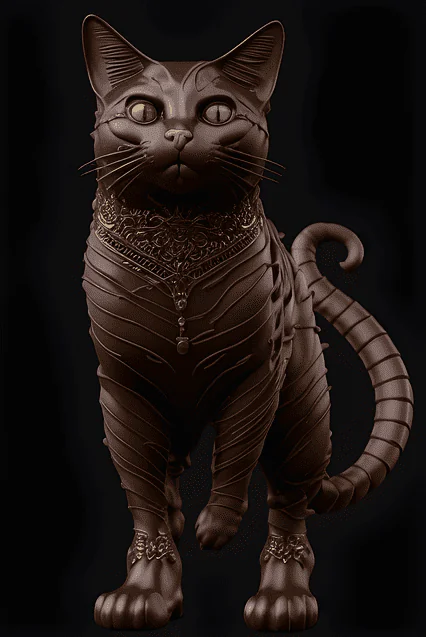
The Flavor of Surprise:
Chocolate Easter eggs have long been a beloved symbol of springtime festivities and the joy of Easter celebrations. These delightful treats, often filled with surprises, bring a sense of wonder and excitement to both children and adults. But beyond their delicious exterior lies a rich history and a variety of traditions that make them more than just a seasonal indulgence. In this article, we’ll explore the origins, cultural significance, and the artistry behind chocolate Easter eggs, uncovering the layers of meaning and craftsmanship that make them so special.
The Origins of Easter Eggs
The tradition of using eggs as a symbol of rebirth and renewal dates back to ancient civilizations. Long before chocolate was even a concept, eggs were decorated and given as gifts during spring festivals. The ancient Persians, Egyptians, and Romans all saw eggs as a symbol of new life. With the rise of Christianity, the egg became associated with Easter and the resurrection of Jesus Christ. It wasn’t until the early 19th century that the first chocolate Easter eggs appeared, thanks to the innovations in chocolate making by European chocolatiers.
The Evolution of Chocolate Easter Eggs
The journey from simple, solid chocolate eggs to today’s intricate and imaginative creations is a story of innovation and creativity. The first chocolate eggs, produced in France and Germany, were solid and quite labor-intensive to make. As chocolate manufacturing techniques improved, hollow eggs became more common, allowing for easier production and the opportunity to include hidden treats inside. The introduction of milk chocolate by Cadbury in the late 19th century further popularized these festive treats, making them more accessible and enjoyable for a wider audience.
The Craftsmanship Behind Chocolate Easter Eggs
Creating a chocolate Easter egg is a delicate art that requires precision and expertise. The process begins with selecting high-quality cocoa beans, which are roasted, ground, and mixed with other ingredients to create smooth, luscious chocolate. This chocolate is then tempered, a process of heating and cooling that gives it a glossy finish and a satisfying snap when broken. The tempered chocolate is poured into molds and allowed to set. Skilled chocolatiers often add intricate designs, edible decorations, and sometimes even personalized messages to make each egg unique.
Cultural Significance and Traditions
Chocolate Easter eggs hold different meanings and are celebrated in various ways around the world. In many European countries, Easter egg hunts are a beloved tradition where children search for hidden eggs in gardens and parks. In Italy, large chocolate eggs often contain surprise gifts and are elaborately wrapped, symbolizing the excitement and joy of discovery. In the United States, the White House Easter Egg Roll is an annual event that brings families together for a day of fun and games. Each culture adds its own flavor to the celebration, enriching the tradition with local customs and practices.
The Science of Chocolate Making
Understanding the science behind chocolate making enhances our appreciation for these delightful treats. The key ingredient, cocoa butter, plays a crucial role in determining the texture and quality of chocolate. Proper tempering is essential to achieve the perfect consistency and sheen. This involves carefully controlling the temperature to ensure that the cocoa butter crystals form in a stable structure. The result is a chocolate that not only looks appealing but also melts smoothly in the mouth, releasing its rich flavors.
Innovative Flavors and Designs
Modern chocolatiers continue to push the boundaries of creativity, offering chocolate Easter eggs in a wide array of flavors and designs. From classic milk and dark chocolate to more adventurous combinations like matcha, chili, and salted caramel, there is something to suit every palate. Advances in technology have also enabled the creation of intricate, 3D-printed designs and hand-painted masterpieces that are almost too beautiful to eat. These innovations keep the tradition fresh and exciting, attracting new generations of chocolate lovers.
Ethical and Sustainable Practices
As consumers become more conscious of their environmental and social impact, the demand for ethical and sustainable chocolate has grown. Many chocolatiers are now committed to sourcing cocoa from fair trade and organic farms, ensuring that their products are not only delicious but also ethically produced. This shift towards sustainability extends to packaging, with many brands opting for biodegradable and recyclable materials. Supporting these practices helps protect the environment and improve the livelihoods of cocoa farmers around the world.
The Element of Surprise
One of the most enchanting aspects of chocolate Easter eggs is the element of surprise they often contain. Whether it’s a toy, a trinket, or another sweet treat hidden inside, the anticipation of discovering the secret adds an extra layer of excitement. This tradition of hiding surprises within Easter eggs has ancient roots, symbolizing the hidden joys and new beginnings that come with spring. Today, this practice continues to delight children and adults alike, making the experience of enjoying a chocolate Easter egg even more magical.
Conclusion
Chocolate Easter eggs are much more than just a seasonal treat; they are a celebration of craftsmanship, culture, and creativity. Their rich history and the traditions they inspire continue to bring joy and wonder to people around the world. As we unwrap and savor these delightful creations, we participate in a time-honored tradition that celebrates new beginnings, surprise, and the simple pleasures of life. Whether enjoyed as part of an Easter egg hunt, given as a gift, or simply indulged in on their own, chocolate Easter eggs remain a beloved symbol of springtime festivity and the flavor of surprise.

